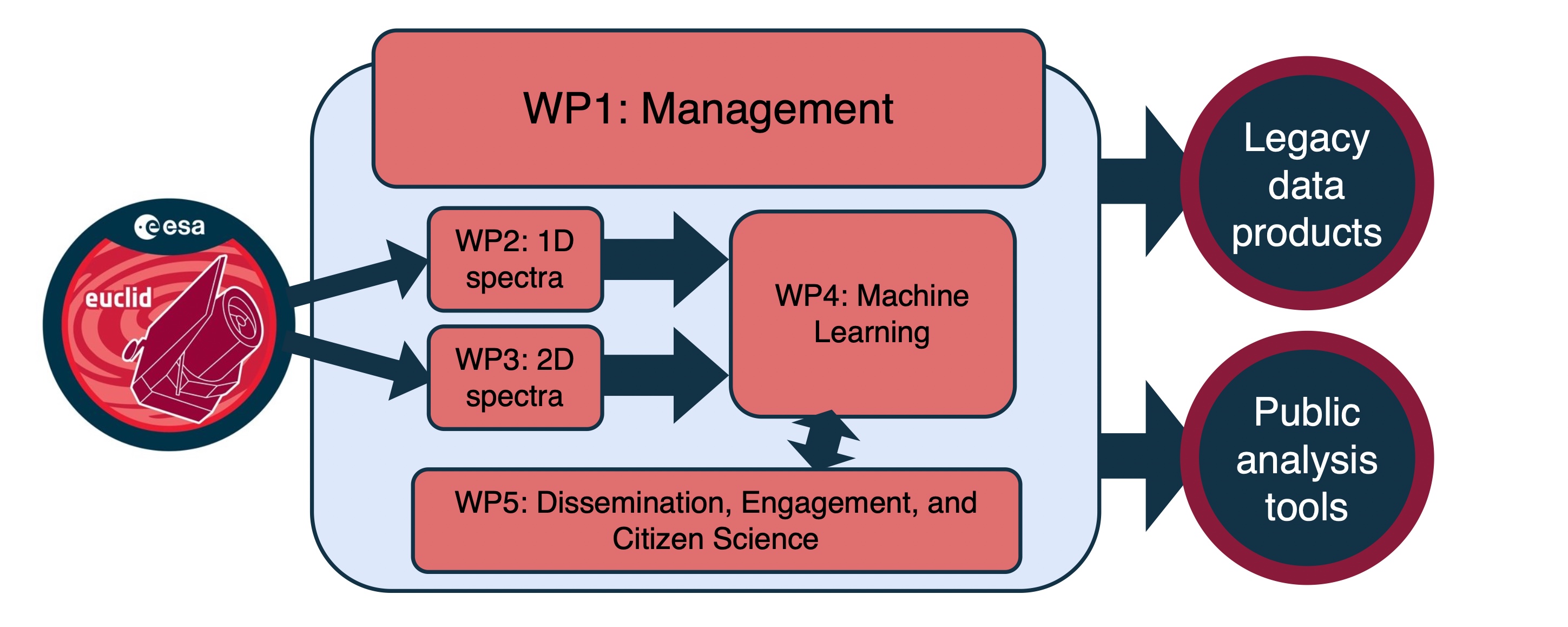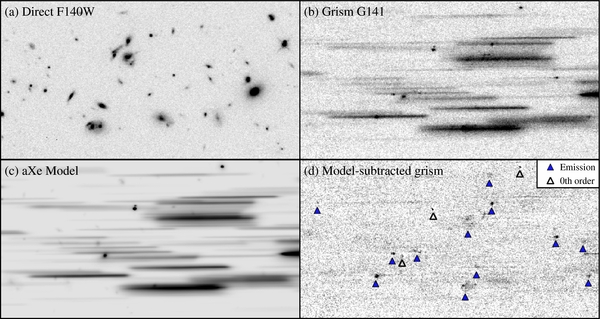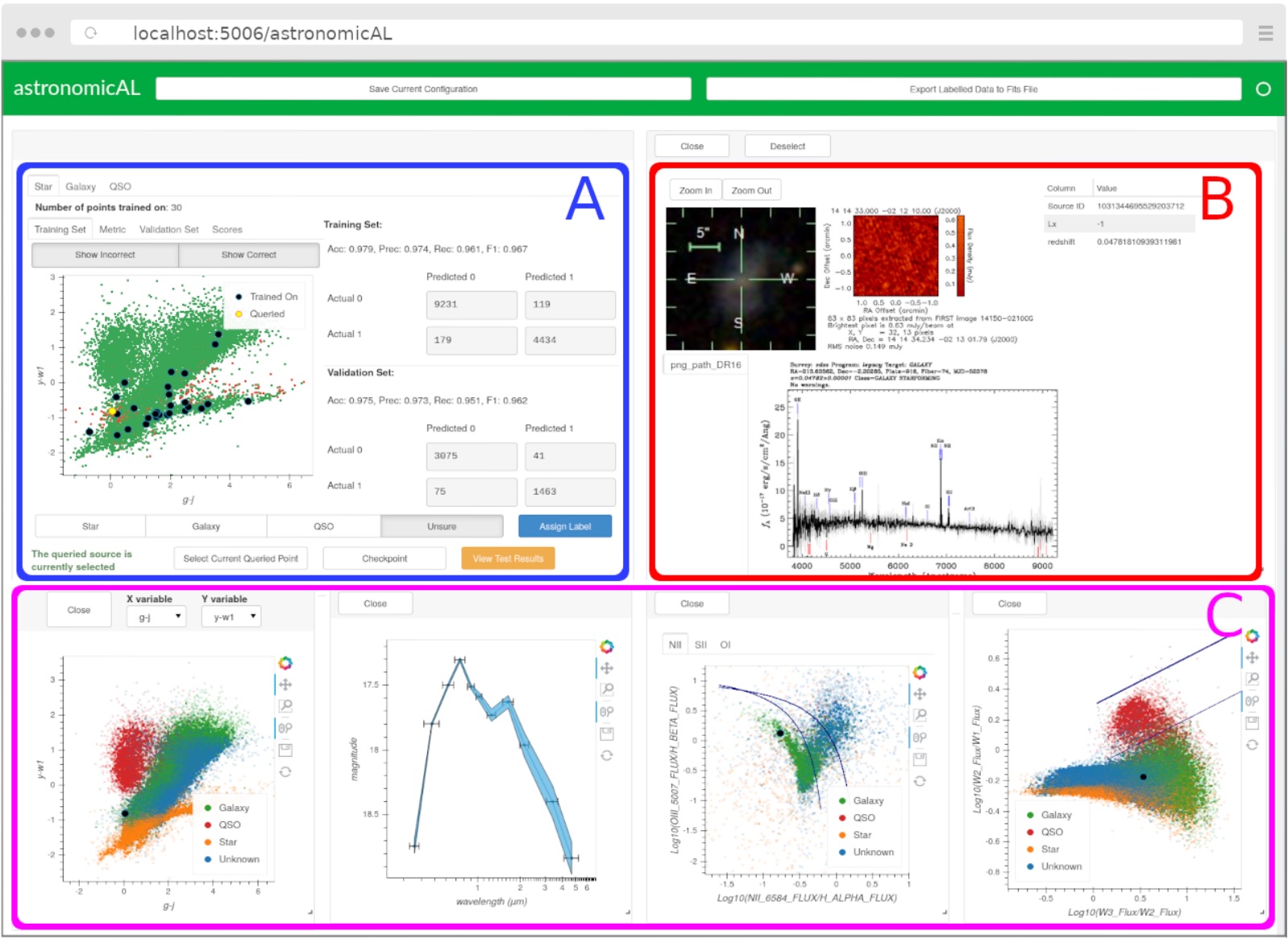Intro

Euclid is an ESA space telescope launched in July 2023, designed to understand the nature of dark energy and dark matter. To achieve this, Euclid is observing over a third of the sky with high resolution imaging and spectroscopy, which will establish “the” reference map of the extra-galactic celestial sphere for decades to come. The giant archive produced will be a goldmine to study the history of the formation and growth of galaxies over the age of the Universe, driving answers to many fundamental science questions on the co-evolution of galaxies and supermassive black holes, the interaction between stars, gas, and galactic nuclei in galaxies at cosmic noon, and excelling in the discovery of rare objects including gravitational lenses.
However, the richest gold veins are also the most difficult to exploit: the tools developed for Euclid’s primary science will not be enough to open the rich legacy for the astronomical community. We therefore created ELSA to explore new methodologies and create cutting-edge pipelines, tools and algorithms. Our ambitious goal is to push the boundaries of spectroscopic analysis to the limits, uncovering hidden details of even the faintest and rarest galaxies measured by Euclid. We will leverage state of the art machine learning to efficiently handle the high- dimensional data and reveal the underlying physical processes they encode. This will need dedicated computing resources and highly motivated researchers versed in the most advanced techniques, that will work with our team of leading experts in the field of galaxy evolution to reveal the treasures preserved in the Euclid vault. Our machine learning will be supplemented by citizen science, enormously extending the reach of ELSA’s impact. ELSA will be a forge of knowledge and advanced tools that will not be confined within the boundaries of our teams, but shared with the whole scientific community and beyond to foster new projects and unforeseen discoveries.
The image above is from ESA's Euclid launch site (copyright ESA - European Space Agency, CC BY-SA 3.0 IGO), while the background image for this website is Euclid's early release observations of the Perseus cluster (copyright ESA/Euclid/Euclid Consortium/NASA, image processing by J.-C. Cuillandre (CEA Paris-Saclay), G. Anselmi, CC BY-SA 3.0 IGO).
Team

ELSA's work is distributed into five work packages, shown schematically above. An overarching management work package is led by the Coordinator, Dr. Margherita Talia. The work package on one-dimensional spectra is led by Dr. Lucia Pozzetti. Work package 3, on spatially resolved spectra, is led by Dr. Ben Granett. Our work package on machine learning is led by Dr. Sotiria Fotopoulou. Finally, our work package on dissemination, engagement and citizen science is led jointly by Prof. Stephen Serjeant and Dr. Hugh Dickinson. More information on these work packages can be found under their dedicated sections on this website.
List of team members
| Name |
Institution |
Role |
| Viola Allevato | OAC, INAF, Italy | Member |
| Micol Bolzonella | INAF, Italy | Member |
| Jarle Brinchmann | Univeridade do Porto, Portugal | Member |
| Giulia Caldoni | Università di Bologna, Italy | Data Steward |
| Emanuele Daddi | CEA, France | Member |
| Chiara D'Eugenio | CEA, France | Member |
| Gabriella De Lucia | INAF, Italy | Member |
| Hugh Dickinson | The Open University, UK | WP5 lead |
| Andrea Enia | Università di Bologna, Italy | Member |
| Sotiria Fotopoulou | University of Bristol, UK | WP4 lead |
| Louis Gabarra | University of Oxford, UK | External Collaborator |
| Fabrizio Gentile | CEA, France | Member |
| Ben Granett | OA-Brera, INAF, Italy | WP3 lead |
| Brivael Laloux | INAF, Italy | Member |
| Xavi Lopez | INAF, Italy | Member |
| Zhiying Mao | INAF, Italy | Member |
| Martina Morabito | Università di Bologna, Italy | Lead Project Manager |
| Ana Paulino-Afonso | Univeridade do Porto, Portugal | Member |
| James Pearson | The Open University, UK | Member |
| Salvatore Quai | Università di Bologna, Italy | Member |
| Lucia Pozzetti | OAS, INAF, Italy | WP2 lead |
| Marco Scodeggio | INAF, Italy | Member |
| Stephen Serjeant | The Open University, UK | WP5 lead |
| Rhys Shaw | University of Bristol, UK | Member |
| Grant Stevens | University of Bristol, UK | Member |
| Margherita Talia | Università di Bologna, Italy | Coordinator |
1D Spectra

The objective of the 1D Spectra work package will be to develop specific analysis tools, outside of the standard official Euclid pipeline, that will be able to handle thousands to millions of spectra, for an optimal and thorough exploitation of the Euclid spectroscopic galaxy surveys for both cosmological and galaxy evolution studies (i.e., studies of intermediate-high redshift scaling relations). We plan to apply the widely used approach of "spectral stacking" to boost the overall S/N ratio of a homogeneously chosen sample of galaxy spectra. The resulting stacked spectrum allows for the detection of spectral characteristics and continuum that are weaker than the instrument sensitivity due to the constructive interference between distinct spectra's signals and the incoherent addition of noise. Further, we plan to extract a wide range of physical parameters, such as star formation history, dust emission, and metallicity developing and using codes, besides the official Euclid pipeline, that combine photometry and spectroscopy. This allows for a more thorough understanding of the physical and chemical characteristics of observed objects.
The ELSA one-dimensional spectral stacking code, being developed by S. Quai, is currently available within the Euclid consortium (see the documentation on the internal Euclid Redmine pages) and will be released to the public by the end of the project.
The image above is from Gabarra et al. 2023.
2D Spectra

The objective of the advanced two-dimensional spectroscopy work package is to enable advanced analyses of the NISP 2D slitless spectroscopy dataset in the Euclid Deep fields by providing tools and reduced data products to the project and to the scientific community. The new tools developed by this work package will produce value-added data products that will be made available to the community.
A tool for spectroscopic data cube reconstruction is currently in development. This tool, GELSA: Advanced tools for Euclid grism spectroscopy, is currently available only within the Euclid consortium but will have a public release by the end of the project.
The image above is an example of slitless spectroscopy with HST, from Brammer et al. 2012.
Machine Learning

The objectives of the machine learning work package focus on delivering machine-learning models that capture the information content (unsupervised methods & outlier analysis) of the Euclid dataset, and methods that will deliver physical parameters in a robust, and time-efficient manner (morphology, star formation rates). We will deliver a visualisation dashboard that gathers heterogeneous data stored in the Euclid and other archives for maximal exploitation of the data.
One of the tools being developed through the ELSA project is AstronomicAL. This is a human-in-the-loop interactive labelling and training dashboard that allows users to create reliable datasets and robust classifiers using active learning. The system enables users to visualise and integrate data from different sources and deal with incorrect or missing labels and imbalanced class sizes by using active learning to help the user focus on correcting the labels of a few key examples. Combining the use of the Panel, Bokeh, modAL and SciKit Learn packages, AstronomicAL enables researchers to take full advantage of the benefits of active learning: high accuracy models using just a fraction of the total data, without the requirement of being well versed in underlying libraries. The image above of AstronomicAL in use is from Stevens et al. 2021.
Citizen Science

The objectives of the work package on dissemination, engagement and citizen science are both one-way information dissemination to all our stakeholder communities (in common with typical Horizon project communication work packages) in order to execute our communication and engagement strategy, and a more innovative and research-driven two-way engagement, dialogue and debate in particular with the science-inclined public through the medium of crowdsourced data mining (i.e. citizen science).
We are hoping to launch our first citizen science project developed with the help of ELSA resources in the autumn of 2025. Please watch this space!
The image above shows a direct image (left) and dispersed spectrum (right) of an example galaxy from the HST WISP survey, as presented to citizen science volunteers. The white arrow shows the bright light produced by an emission line. Image Credit: Vihang Mehta.
Internal

Within the Euclid consortium official Slack workspace, the project can be contacted in the #swg-legacy-elsa channel.
ELSA has an internal wiki, available to authorised users of the internal Sharepoint site. Consortium members can record their presentations to non-ELSA audiences in this Sharepoint spreadsheet.
Other internal Euclid resources can be found at the Euclid Quick Start Guide.
ELSA kick-off meeting: Bologna, 12-13 February 2024. Please visit the meeting website for the schedule and logistical information.
ELSA annual meeting: Goldney House, Bristol, 13-17 January 2025 (image above). Schedule here.
Papers

A full list of publications acknowledging our ELSA funding can be found through NASA ADS
The OpenAIRE project also maintains a catalogue of publications, software and data products from Horizon-funded projects, which can be searched to locate ELSA outputs.
Contact
Within the Euclid consortium official Slack workspace, the project can be contacted in the #swg-legacy-elsa channel.
Other internal Euclid resources can be found at the Euclid Quick Start Guide.
Public contact details for the work package leaders (if available) are available on their personal webpages, for which links are available under the Team tab.
Social media: Bluesky, Mastodon, LinkedIn, Github, Twitter
Elements
Text
This is bold and this is strong. This is italic and this is emphasized.
This is superscript text and this is subscript text.
This is underlined and this is code: for (;;) { ... }. Finally, this is a link.
Heading Level 2
Heading Level 3
Heading Level 4
Heading Level 5
Heading Level 6
Blockquote
Fringilla nisl. Donec accumsan interdum nisi, quis tincidunt felis sagittis eget tempus euismod. Vestibulum ante ipsum primis in faucibus vestibulum. Blandit adipiscing eu felis iaculis volutpat ac adipiscing accumsan faucibus. Vestibulum ante ipsum primis in faucibus lorem ipsum dolor sit amet nullam adipiscing eu felis.
Preformatted
i = 0;
while (!deck.isInOrder()) {
print 'Iteration ' + i;
deck.shuffle();
i++;
}
print 'It took ' + i + ' iterations to sort the deck.';
Lists
Unordered
- Dolor pulvinar etiam.
- Sagittis adipiscing.
- Felis enim feugiat.
Alternate
- Dolor pulvinar etiam.
- Sagittis adipiscing.
- Felis enim feugiat.
Ordered
- Dolor pulvinar etiam.
- Etiam vel felis viverra.
- Felis enim feugiat.
- Dolor pulvinar etiam.
- Etiam vel felis lorem.
- Felis enim et feugiat.
Icons
Actions
Table
Default
| Name |
Description |
Price |
| Item One |
Ante turpis integer aliquet porttitor. |
29.99 |
| Item Two |
Vis ac commodo adipiscing arcu aliquet. |
19.99 |
| Item Three |
Morbi faucibus arcu accumsan lorem. |
29.99 |
| Item Four |
Vitae integer tempus condimentum. |
19.99 |
| Item Five |
Ante turpis integer aliquet porttitor. |
29.99 |
|
100.00 |
Alternate
| Name |
Description |
Price |
| Item One |
Ante turpis integer aliquet porttitor. |
29.99 |
| Item Two |
Vis ac commodo adipiscing arcu aliquet. |
19.99 |
| Item Three |
Morbi faucibus arcu accumsan lorem. |
29.99 |
| Item Four |
Vitae integer tempus condimentum. |
19.99 |
| Item Five |
Ante turpis integer aliquet porttitor. |
29.99 |
|
100.00 |








